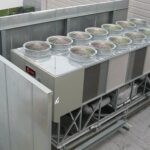There is an increasing need for sustainable and environmentally friendly solutions in all facets of our lives in a world where environmental issues are becoming increasingly important. It also applies to the food business, wherein compostable food packaging has shown promise in lowering waste and fostering environmentally friendly behaviours.
Biodegradable Food Containers: An Ecological Movement
Instead of spending years languishing in landfills, compostable food packaging is made to decompose organically and restore nutrients to the soil. Compared to conventional plastic and Styrofoam packing, which can take hundreds of years to degrade, this creative method offers a sustainable substitute.
Traditional Food Packaging’s Effect on the Environment
Traditional food packaging’s manufacture and disposal have long been causes for worry. These materials have a bad reputation for killing wildlife, blocking streams, and generating pollution. Environmental problems are made worse because their creation adds to the depletion of limited resources like petroleum.
Biodegradable Food Packaging
Reduced Waste: Compostable food packaging lessens the load on waste management systems by lowering the quantity of non-biodegradable trash in landfills.
Energy Efficiency of biodegradable packaging materials makes them a more sustainable option because they are produced with less energy and resources than typical plastics.
Minimal Chemicals: Less hazardous chemicals are usually present in compostable packaging, which lowers the possibility of poisons seeping into the environment.
Promotion of the Circular Economy: Materials are reused, repurposed, or biodegraded rather than thrown away in a circular economy backed by compostable packaging.
The Ecological Food Packaging
“Eco-food packaging” is more general and refers to various sustainable packaging options. Eco food packaging encompasses not only compostable packaging but also reusable containers, biodegradable choices, and other sustainable materials. Compostable packaging is a significant component of this trend.
Multiple Environmental Food Packaging Options
Reusable Containers: Reusable food containers composed of materials like glass, bamboo, and stainless steel are becoming more and more popular among environmentally aware consumers. With these containers, waste from single-use packaging is decreased.
Biodegradable Plastics: A few environmentally friendly food packaging solutions employ biodegradable plastics, which decompose quicker than regular plastics and have a minor negative influence on the environment.
Plant-Based Materials: To produce food packaging choices that are environmentally beneficial, they are turning to plant-based materials like cornflour, sugarcane, and potato starch. These materials decompose naturally and can be replenished.
Minimalist Packaging: Minimalist packaging is an additional environmentally friendly trend that tries to cut down on waste and extra packing. It entails utilising the minimal amount required to safeguard the merchandise.
Eco-Friendly Food Packaging in the Food Sector
Eco-friendly food packaging is something that the food business must embrace and promote. As the environmental effects of food-related waste become more widely known, several companies are attempting to use more environmentally friendly packaging techniques.
Assets and Patterns of Consumers
Environmental issues are driving more and more consumer decision-making. Therefore, food companies must supply eco-friendly packaging to suit consumer demand or risk losing them. Numerous businesses are looking at alternatives to conventional packaging materials due to changing customer expectations.
Cup Paper Suppliers’ Role in Sustainability
Because consumers frequently use cups for beverages and takeaway food, cup paper suppliers are essential to the eco-food packaging movement. The entire sustainability of the food and beverage sector is significantly impacted by the materials used to make cups.
Purpose-Based Sustainable Materials
Recycled Paper: More and more cup paper providers are making cups out of recycled paper. As a result, fewer trees must be cut down, which benefits the recycling sector.
Biodegradable Coatings: To make some cups more environmentally friendly, they are covered with ingredients that break down naturally. In composting facilities, these coatings facilitate the cups’ breakdown.
Reusable Cup Programmes: A few suppliers are investigating the idea of reusable cups, which allow users to return their used cups for washing and reusing, thereby cutting down on waste from single use.
Resilience of the Supply Chain
Sustainable practices in their supply chains are a priority for providers of cup paper. It entails obtaining materials from ethical and approved forestry operations, cutting back on energy use during production, and minimising waste generated by their activities.
Partnering with Food Companies
To supply branded and customised cups that support the sustainability objectives of food businesses, cup paper suppliers frequently work directly with these enterprises. These collaborations help consumers’ responsible disposal habits and adopt environmentally friendly products.
Guidelines and Accreditation
Regulatory agencies are putting policies and certifications into place to guarantee the efficiency and reliability of eco-friendly food packaging and cup paper suppliers. By assisting customers in identifying products that follow sustainable practices, these standards promote market trust. Regulations and certifications play a more crucial role in encouraging responsible packaging practises as the eco-conscious movement gains steam.
The Continuous Transition to Sustainability
The food sector is committed to finding sustainable packaging solutions, and this commitment is growing as a result of customer demand and industry awareness of its responsibilities. Compostable food packaging, eco-friendly food packaging, and the initiatives of cup paper suppliers come together to form a potent coalition that propels change in the direction of a cleaner, more ecologically conscious food business. The globe gets closer to a healthy planet as these sustainable practices proliferate.
Compostable and environmentally friendly food packaging has a bright future, but there are still several obstacles to overcome. These include resolving the higher initial costs of sustainable materials, educating consumers on correct disposal, and providing better infrastructure for composting. Collaboration between many stakeholders, such as governments, industry, and consumers, is necessary to overcome these difficulties.
The landscape of food packaging is still being shaped by people’s increasing knowledge of environmental issues and the desire for more sustainable solutions. Compostable and environmentally friendly food packaging is expected to become increasingly popular as technology develops and sustainable materials become more affordable. This change demonstrates our commitment to a more environmentally friendly and accountable food business.
Conclusion
The food business is transforming sustainably, led by compostable and eco-friendly packaging. These developments demonstrate the strength of consumer demand and industrial response while cutting waste. Cup paper suppliers are essential to this trend because they provide eco-friendly solutions that help achieve the more general objectives of lessening the impact of food packaging on the environment. We are approaching a future where the food sector is more environmentally sensitive and sustainable as more companies and consumers accept these changes.






Leave a Reply